Project CETUS will see the design and build of an ‘Extra Large Autonomous Underwater Vehicle’ which may one day work alongside Astute-class attack submarines.
Titled “AUV DEMONSTRATOR DESIGN, BUILD AND TECHNICAL SUPPORT CONTRACT”, the contract tender notice has a value of £21.5m. There are currently no other available details aside from some technical details. The following is the notice.
“1. Title: AUV DEMONSTRATOR DESIGN, BUILD AND TECHNICAL SUPPORT CONTRACT
2. Awarding Authority: Ministry of Defence, GB Email: [email protected]. (Andrea Stockton)
3. Contract type: Service contract
Competitive procedure with negotiation
4. Description: Project CETUS: Design, Build and Technical Support of an XL-AUV Demonstrator Vehicle
5. CPV Code(s): 71356000, 73400000, 73420000
6. NUTS code(s): UKK, UKK1, UKK11
7. Main site or location of works, main place of delivery or main place of performance: South West (England), Gloucestershire, Wiltshire And Bristol/Bath Area, Bristol, City Of.
8. Reference attributed by awarding authority: Project Code 702282450
9. Estimated value of requirement: Estimated Value of Contract
£21.5m
10. Listing Deadline: 10.2.2022 (23:59).”
The specifics of the intended design come from a job listing for a Design Engineer for the project posted 28 days ago, which states:
“Primary role is to lead project CETUS; the design and build of a 27 tonne, 12m Autonomous Underwater Vehicle (AUV) Demonstrator, with specific responsibility for leading on the establishing technical specification and deliverables, running the competition, evaluating tenders and contract placement during FY21/22. Subsequently responsible to ensure requirements and delivery pace are being met and are accepted.
Secondary role is to lead on technical studies exploring AUV concepts and provision of advice to the application of AUV to the future underwater battlespace including those AUV that could complement the replacement Astute Class SSN.”
The somewhat related Project MANTA is already underway, although that’s a 9 metre submarine. You can read more about this from the excellent NavyLookout here.
Manta – the Royal Navy gets its first extra-large autonomous submarine
What exists today?
One platform tthat comes to mind is Orca. Orca is an autonomous underwater vehicle that is under development by Boeing and Huntington Ingalls Industries for the United States Navy. The Orca is around 15m in length, so just a bit bigger, and the U.S. Navy want five of them. Work has already started, a concept image is shown to illustrate this article.
https://www.naval-technology.com/features/boeing-orca-xluuv-unmanned-submarine/
You can read more about Orca at Naval Technology by clicking here.


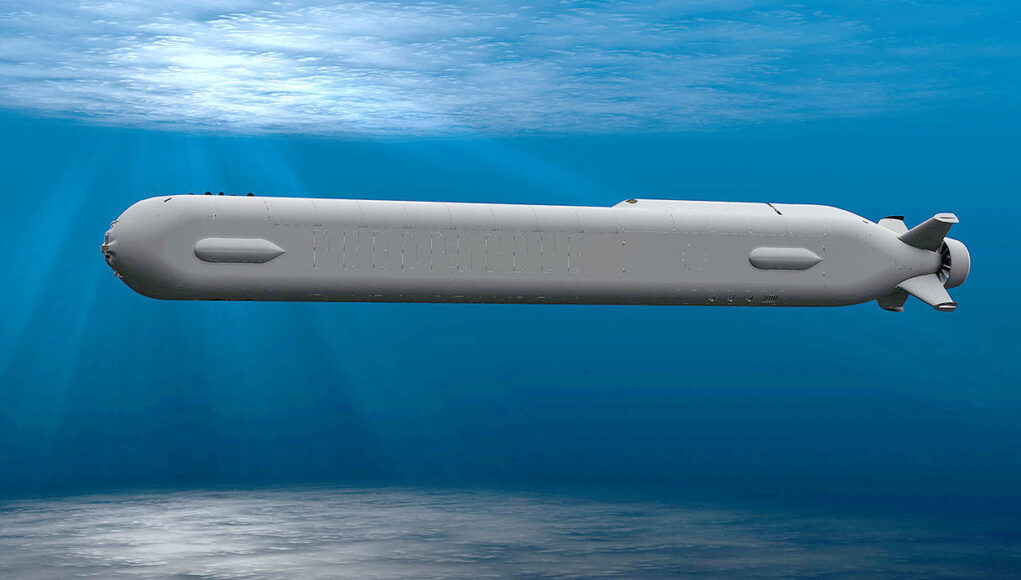

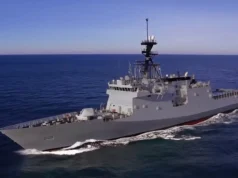
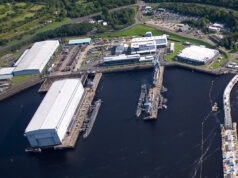


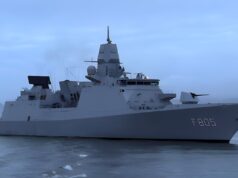


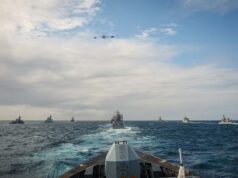


This is another evolutionary step in developing the technology, the Royal Navy is ultimately looking at fielding a 30m long, torpedo armed XLUUV.
ED. How come Watchzero can post a comment with an attachment but when I tried posting a link to the same product it got blocked? Are there any rules we can abide by so we know how not to fall foul of them?
I think he posted an image not a link
It is a bit finicky on this comment engine, it wont show you a preview of the image and sometimes the link wont work at all.
So these would fill in that gap that would have been taken up by a electric boat, so home waters tasking, choke point control etc.
if they are going to support the nuclear boats they would need to have the same strategic mobility as you would not want to shackle your nuclear fleet to a less mobile electric Autonomous platform ( unless the nuclear boat is able to bring the Autonomous platform with it).
A (future?) nuclear submarine could maybe recharge electric drones it is operating with while remaining submerged?
How fast could these be made to develop a bigger submarine force?
The issue is sat links don’t work under water, so it would either need to be some sort of AI where you give it a mission and it works out how to achieve it or it would need a manned sub close by to provide instructions. I can’t see an AI controlled weapon being publically acceptable at this stage in time
So I’m guessing you just need another source to confirm your actual position from time to time?
https://navalpost.com/how-submarine-navigate-underwater/
That article clearly states that they use sat links when on the surface only. That would not allow a human to be in charge when the weapons are fired.
Surely establishing a permanant communications link is merely a technical challenge and it won’t be the only one on the project.
The benefits of this facility clearly outweigh any uncertainty about exactly how it will be achieved but it certainly is not impossible and a human will provide the orders via satilite (or indeed other means).
Just because the tech may not yet be available does not mean we should be defeatist.
For sure, but it’s a prett major limitation, which would need to be overcome. Starting to order/build the device prior to overcome it seems backwards. I assume therefore the plan is it to be the equiv of a loyal wingman and only operating near a manned sub to ensure underwater communication can be maintained.
What weapons, any hint on type?
“The issue is sat links don’t work under water”
I’m talking about how to confirm your position only steve.
https://www.militaryaerospace.com/computers/article/16714771/bae-systems-to-build-undersea-navigation-without-gps-for-unmanned-underwater-vehicles-uuvs
Ah ok, thanks
Sub navigation relies on extremely good charts of the seabed (that’s what HMS Scott is for) and a form of dead reckoning backed up by sonor mapping. sattelites are used rarely when at periscope depth to update the inertial navigation system.
No mate SMs use SINS for navigation when dived with inputs from Co,D, Sp, Pitch, Roll and SWT. When at PD they will always update their position from GPS, and then correct the position on SINs. This kit is prone to ‘drift’, but it is a known variable, so allowed for when navigating.
SINS stands for ship’s inertial navigation system (which is automated dead reckoning) – which is exactly what I was describing for a lay audience. SINS needs very accurate charts for seabed data and as you say inputs from sensors and ship control inputs.
Yes, I know what SINS is, Wecdis (electronic chart system) is now used for navigation, with the charts only as accurate as the last time the area was surveyed, some areas haven’t had a survey in decades, as unfortunately Scott can only be in one area at a time. Its a lot of water to cover, so, certain areas will receive priority for survey work
Gone are the days when we had a survey fleet, unfortunately.
There is an industry led drive to remotely operate everything that moves from ships to drones in all dimensions. AI is artificial and can be compared to an unreasoning psychopath when weaponised. There must at all times be a human in control. All systems must not be hackable by other actors and must be position compliant from it’s own inertial resources. Every drone or unmanned unit must be in charge of a reasoning being.
Could replace troublesome towed arrays! ‘loyal seaman’
Just as likely to be rammed by an errant Russian submarine as the towed array on HMS Northumberland apparently was.
Well random collisions occur all the time at sea, I seriously doubt the Russians have the capability to ram the towed array even if they wanted to.
But while towing it, a frigate’s manoeuvrability is constrained by it. A submersible version of a loyal wingman would be able to hunt submarines and signal targeting information to a frigate that was both free to manoeuvre and well out of torpedo range of where the submarine is.
Always assuming it could detect a dived SM in the first place, then calculate a tgt Co, Sp and position relative to the AUV before transmitt said info to a frigate. Can’t think why we weren’t doing it years ago!
Perhaps because it’s not that straightforward or simple to do – just a thought.
Yes extremely difficult, but until a few years ago most rocket scientists dismissed the idea of a reusable space-launch rocket being able to land itself vertically using onboard AI, let alone on a small barge in the middle of the ocean. But now Space X do that several times a month…
It’s called scientific and engineering progress, and and it accelerated every single year, even during pandemics.
Agree it is progress, undoubtedly had billions thrown at it to make it work. Unless there is some mathematical break through WRT signal processing, then smaller and less numerous arrays of hydrophones are not going to be able to detect already weak signals coming from a dived SM at any significant ranges when compared to a SSN with its significant sensor suite. Laws of physics I believe.
SMs have won the battle of stealth and noise in the passive domain, detection ranges are greatly reduced when compared with those of a decade or more ago. AUVs will need considerable luck to get a sniff of a patrolling SM.
Actually less money than NASA has wasted on SLS or ESA or Ariane.
Yes SSNs have a significant sensor suite, the Astute’s are the primary sub killer in the RN… So it would be obvious to fit the same sensor suite to any UAV tasked with hunting subs.
Which blows your argument out of the water, as it were 🤷🏻♂️
No not really Obvious at all, the bow array alone weighs in between 20-25 tonnes, with the flank array coming in between 15-20 tonnes, that’s without adding a TA or all the inboard processing systems, , so you propose to fit some 35 tonnes of sensors onto a 20-30 ton AUV? Totally clueless fella, go back to the playground and do some research before you spout drivel.
Well clearly not obvious to a short-sighted dimwit such as yourself who believes that UAVs are limited by size. At no point did I state the size or tonnage of the UAV.
You probably think airborne drones are limited to those quadcopter things used for photography. 🤷🏻♂️
Wow, dimwit, really deep, cheers!
You might still want to research your subject before offering such knowledgeable insights!
Who needs real life experience about a pretty niche role (like being a submariner) when you can come on here and learn all about it all in a day. 😂
Absolutely mate, can’t think why I wasted all those years! Should have been an astronaut instead!
Mate, I was thinking the same…..respect.
Hello Daniele, yes I know….
I was reading one of Ur posts on a different thread today, mate you are far to polite and nice! Me I just want to spit feathers at some of the posts, it’s enough to drive you mad sometimes.
Enjoy mate.
I know, I am. Being nice is free, so why not. It gets to a stage where you just want a nice, good old F off! But then you’re as bad as them. Destroy with facts, common sense, and decency. I have one on my case right now….
Some people really need to study on this site more to see who’s a SMEs on what before telling them their business!
👍
That is still no justification, Deep32, for being rude.
hang on, Deep32, there is no need to be rude.
Absolutely right fella, there isn’t.
“Which blows your argument out of the water, as it were “
Not really Sean. While things no doubt will advance there is a lot of reasons why submarine drones are going to be limited in capability for a while yet. Whatever the size (and lets stick with what we’re talking about NOW), they are going to be limited in range/speed/payload. If you decide to go for speed and use HAP/otto fuel then you’re going to be limited with range (and compromise stealth), there’s going to be a trade off. That’s before you throw in the problems (as mentioned elsewhere) with communications, really you’re restricted to line of sight and having a mast/buoy on the surface. Line of sight can be the horizon or up to a satellite. The weight involved of putting in even half decent VLF reception would be hard to justify (I would assume). Again, the more stuff you put in it, the more thirsty the propulsion is going to be and as its going to be designed to assist a manned S/M then its going to have to be reasonably mobile, even if tethered for transits. I’m also assuming it will have to be wire guided so some control from the ‘mothership’ can be used as ‘short wave’ comms really doesn’t like the oggin.
Now if we’re talking about something that is going to be assigned to an area to stooge about and report back then speed isn’t going to be such an issue and there may be scope for a bit more autonomy but that’s not what will be required for a ‘Loyal Sundodger’.
👍👍
The future. Interesting they could be used perfectly well with minimal need for communication with human or other systems. For anti ship/sub warfare the noise made by classes or even individual ships/subs in transit could be stored in the drones software and in the event of conflict an activation code sent and you’d be good to go.
You have just stated the weak link in the chain., i.e. the satellite. During a peer conflict, these will be on the list of primary targets to take out on Day 0 of a conflict, either through kinetic means, jamming or hacking. It is for this reason that unmanned vehicles will need a “manned” aircraft, mothership or vehicle to fly, sail or travel within visual range to guarantee the data-link.
Taking out all the opponents satellites on Day 0 by kinetic means is increasingly appearing to be a strategy where nobody wins, as it may render LEO completely out of bounds to all future spacecraft/ rockets/ satellites due to the sheer volume of debris created.
True, though I see more nations prioritising short-term military wins in downing an enemy satellite than considering the long-term issues you described.
Hi Steve,
It could be that some could or have decided that nullifying LEO as a military advantage might actually level the playing field in their favour and damn the economic fall out…
Cheers CR
Kinda depends on the scenario. A minor war then longer term thinking would rule over, but ww3, it would be down to day by day survival and whatever it takes to get to the next.
I really don’t think some of the belligerents we could be facing with this capability will care.
If you targeted the US GPS satellites as a minimum, especially in a nearby cluster. The degradation of even losing as little as 5 would significantly hamper any system reliant on them for navigation, targeting or timing. It would cause a dead zone that the Earth passes under. The US have a few GPS satellites in reserve, which take time to set up and launch. But I don’t believe they have enough to replace a large number if they are lost. They could also move a few around to close the gaps, but that uses up their finite amount of fuel that is used for station keeping.
In the West, we have become overly reliant on satellites for communications etc. Apart from the USA, three other countries (Russia, China and India) have shown they have demonstrated the capability to kinetically kill a very high altitude satellite. In theory Iran, Pakistan and North Korea could also do it, as they all have access to medium range and intercontinental range missiles that could be repurposed for launching a vehicle to medium to high orbits. I think we could at a pinch include both France and the UK in the club, as we could also repurpose an ICBM for this task.
One of the methods that Russian is known to favour is the use of a low yield nuke to generate an EMP to kill satellites. This way only a few close by will be destroyed to create a debris cloud. Whilst the EMP will have a greater range, shorting out a larger number of satellites. These will then eventually be pulled back down to Earth to burn up in the atmosphere.
Both Russia and China have publicly shown that some of their satellites have a “self defence” system, that comprises of a oxygen rich propellant and a solid shot. These space guns although they won’t admit it, are also designed to knock out another satellite. The solid shot will likely be aimed at something critical, like a battery, thereby switching off or “darkening” the satellite.
The other option would be through electronic means, either by jamming or hacking. In this regard Russia is the top belligerent. Having shown that they are very capable at not only jamming GPS but also spoofing it, so that a receiver will miscalculate its location. They have also shown that they are very good at disrupting data-links, even to the extent where Link-16 will no longer be guaranteed.
I would not be at all surprised to find a coordinated attack on military and commercial satellites through hacking. Both Russia and China have be found to be the top creators of Ransomware, but also computer viruses in general (didn’t mean Covid-19). However, both Iran and North Korea have also been found to be creating purposefully targeted viruses. Even though it’s not been publicly released, how many times in the last ten years have satellites been targeted? I know of at least one occasion that one of our Skynet satellites was attacked. It took it off line for four days!
Great post. I learned something here. Thanks.
Looks interesting!
https://www.militaryaerospace.com/computers/article/16714771/bae-systems-to-build-undersea-navigation-without-gps-for-unmanned-underwater-vehicles-uuvs
I wonder if the acoustic network signal will be strong enough so that you could use it a bit like a bistatic radar?
They could be piggy backed on an Astute then deployed when needed and used in a “loyal Wingman” concept with all the relevant data uploaded from the mother vessel before deployment.
The Chalfont system for carrying swimmer delivery vehicles on RN SSNs could presumably just as easily carry an xluuv of the same size.
That was behind my thinking yes
Yes I think they would need to have some way to transport the drone on the nuclear boat otherwise it would not work well from a strategic mobility point of view. But that would not negate other uses such as part of the equipment of an ASW fitted general purpose frigate ( suddenly all those mission bays turn a type 31 from a low end asset to something else) or for safeguarding the transit of the deterrent and home waters work.
Hello Jonathan, What we desperately need is smaller subs to police the chock points around the UK like the major ports which you eluded to in your comments so we could have 2 variants one for loyal wingman work and one for inshore and sensitive area protection.
Yes the local and choke point management is probably the most interesting capability these systems could offer, that would free our nuclear boats to do what they do best with is global power projection.
I could not agree more, we are in a desperate state at the moment with only a handful of Astute’ s. So any thing that can lighten the work load will help increase the effectiveness of these magnificent boats.
Something that the Australians might find of use too while they sort out their ssn procurement.
Yes, so if they played their cards right they might get a little extra funding from down under to push things along.
I can imagine having UAVs sitting passively on the sea bed at choke points, identifying enemy subs (or surface vessels) then sending up a comms buoy. Quick burst, sending off the info, then quickly reel in the buoy and wait for the next contact. So there you have stealth AND high speed comms.
I would like to see a similar type of thing but with an offensive capability so that it would give us a more rapid response in defending our choke points.
I’d say in the near future these would either be semi autonomous (small crew for making key decisions) or acting as “loyal wingmen” to the Astutes being controlled using new underwater comms technology.
https://www.navylookout.com/stop-collaborate-and-listen-the-technologies-enabling-underwater-naval-communications/
There is a lot of suggestions that these things should be tooled up with ASW and ASuW weapons and sent off into the blue ready to create mayhem. Most unlikely at least for the moment.
What I have read so far with regards to AI and autonomous vehicles is that a man in the loop is still very much the safest route especially in peacetime and in an environment with multiple military and civilian ‘targets’ passing through singularly and in clusters (i.e. non co-operative groups of vessels in shipping lanes). The safety case is still a long way from being sorted out and no one wants to start a shooting war by accident. So I think the first deployments will be much more routine and boring and more focused on generating intelligence and building the maritime picture.
We have a very limited number on manned platforms, frigates, SSN’s or helos. These platforms are so thinly spread that they often (usually?) have to build their own picture and then prosecute any contact they develop. These AUV’s could be put into choke points on extended patrol (low speed, high endurance) with a good sensor pack and no weapons. Information could be sent back to a command hub either afloat or ashore, via a deployable buoy, on a burst transmition basis to be analysed and assets deployed accordingly.
Such a system could make a significant contribution in protecting the CASD by providing extended surveillence on the approaches to the Clyde Naval Base, for example, or monitoring high value assets such as data cables under the sea as well as gather target signature data – possibly freeing up SSN’s for other roles. The protection of undersea cables was highlighted by the Integrated Review as a priority.
Whilst armed submersible drones will likely come along at some point, the fact that it is impossible to maintain contact with them at high data rates required for real time command and control means that they really will need very very robust decision making algorithms which appear to still be some way off, if they are even possible. Airbourne autonomous vehicles are far easier to monitor and communicate with, so it is much easier to provide a robust safety case and certification processes for peacetime operations and their increased use may be contributing to the impression that AI has arrived across the board, it hasn’t. It is making inroads, that is all.
Cheers CR
I think you have the right of it CR, there are going to be a lot of issues to sort out both with technology and ethics before we see and ‘Starwars’ underwater drones.
Yes the dynamic range of autonomous weapons possible outcomes is a wide band like anything new and untested (e.g. social media). All your suggestions seem well and good. Outside of domestic interests, I can imagine NATO-owned ISR XLUUVs based in Iceland picketing the GIUK gap.
Good news and like the loyal wingman concept can act as a force multiplier for the SSNs. Also carry out boring patrols along undersea cables etc.
That’s because you can’t inflict the same level of damage on an enemy using a unmanned vessel at sea.
Auvs will not replace a crewed SM anytime soon, or later for that matter. It simply can’t do what a manned SM can, which is why we have them and why we are building SSN (R) to replace the Astutes.
Some of the other posts in reply to you contain pertinent facts as to why this isn’t such a easy environment to work in and why for the time being, Auvs will only assist manned SMs
You don’t need satellites. It’s blue water light a new technology to send information to and from, all very hush hush. Its also intelligent AI something I’m more concerned about. “I’ll be back.”
For ASW, ARCIMS USV’s ASW option “SEASense” is also a good option. I think XLUUV will be good for “forward deployed” and sneaking around Russian/China naval bases. For choke point ASW and supporting SSBN, I guess ARCIMS SEASense shall better be used.
Ref; https://www.youtube.com/watch?v=DvWkCBEOAUA
Interesting story from Nov, which states that the UK has been most instrumental in helping Taiwan build its first sub:
https://www.reuters.com/investigates/special-report/taiwan-china-submarines/
I wonder why the Navy doesn’t look for its next generation SSN at using the Dreadnought design as mother-ship. The tubes for the Trident must be at least 14 meters in length, and are just over 2m wide. They come with 12 tubes, so they could pack a whole family of capabilities into them. Of course, the SSBNs are extremely expensive (over 7billion….gulp), but maybe a less stealthy, and less some of the other most high-end systems required for a boomer, could help achieve a less costly per unit price? And if the Australians are also looking for SSNs, then maybe extending and expanding the order might make a suitable price possible. The Astutes are already well in excess of 1.5billion pounds as it is. If wishes were horses…
Your neighbor is here:
https://www.youtube.com/watch?v=64TVDx7huHI
Under water drone are going to be the “hypersonic breaker” of the sea.
Yes it’s very nice, although at 10 tons a lot smaller than the 27 ton CETUS, let’s hope it is developed further. Some room for collaboration maybe?
At this moment the enemy are crossing the dover straits ,and nothing is done,what is the point .
Disgusted
Any idea on offensive weapon fit?